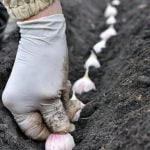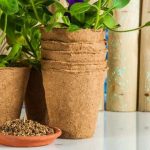Container flower gardening ideas are a great way to add colorful blooms and greenery to any space, whether you have a large backyard or a small balcony. This method of gardening offers versatility, allowing you to easily change the layout and design of your garden whenever you desire.
In this article, we will explore the beauty and benefits of container flower gardening, as well as provide you with helpful tips and ideas to get started on your own vibrant garden oasis.
One of the key components of successful container flower gardening is choosing the right containers for your flowers. From size and material to drainage and aesthetics, selecting the perfect pots for your plants can make a significant difference in their growth and overall appearance. Additionally, finding the ideal location for your container garden is crucial – considering factors such as sunlight exposure, wind conditions, and available space will ensure that your flowers thrive in their environment.
As we delve into soil and fertilization tips for thriving container flowers, it’s important to prioritize using high-quality potting mix, providing essential nutrients, and maintaining proper watering frequency. Equipped with must-have tools like a trowel, gloves, and watering can, you’ll be well-prepared to nurture your container garden with care.
Whether you’re a beginner looking for easy-to-grow flower options or an experienced gardener seeking design inspiration, this article will guide you through creating stunning container flower arrangements that will enhance any outdoor or indoor space.
Choosing the Right Containers for Your Flowers
Container flower gardening is a fantastic way to add beauty and charm to any outdoor space, whether you have a sprawling garden or a small balcony. When it comes to selecting the right containers for your flowers, there are several factors to consider to ensure the health and growth of your plants. Here are some key points to keep in mind:
- Size: Choose containers that provide enough room for your flowers’ roots to grow and spread. Avoid overcrowding by selecting pots that are spacious enough for your chosen plants.
- Material: Opt for containers made from durable materials like ceramic, plastic, or fiberglass. These materials provide adequate insulation for plant roots and come in various styles to match your outdoor decor.
- Drainage: Proper drainage is essential for container gardening success. Ensure that your pots have drainage holes at the bottom to allow excess water to escape and prevent root rot.
- Aesthetics: Consider the overall look and feel of your outdoor space when choosing containers. Select pots that complement the colors and textures of your flowers, adding visual interest and cohesion to your garden.
Finding the perfect balance between size, material, drainage, and aesthetics will not only enhance the visual appeal of your container flower garden but also contribute to the overall health and longevity of your plants. Take the time to carefully select containers that meet these criteria, ensuring a thriving garden filled with beautiful blooms all season long.
Whether you opt for classic terracotta pots or modern fiberglass planters, investing in high-quality containers tailored to your flowers’ needs will set the stage for a successful container gardening experience. By paying attention to these crucial elements, you can create a stunning display of blossoms that will bring joy and vibrancy to your outdoor space.
Selecting the Perfect Location for Your Container Garden
When it comes to container flower gardening, one of the most crucial aspects to consider is the location where your flowers will thrive. Sunlight, wind exposure, and space considerations are significant factors that can affect the health and growth of your plants. To ensure a successful container garden, it is essential to select the perfect spot for your blooms.
Sunlight Requirements
Different flowers have varying sunlight requirements, so it is important to choose a location that receives adequate sunlight based on the needs of your plants. Most flowering plants thrive in full sun, which means they require at least 6-8 hours of direct sunlight each day. However, some flowers prefer partial shade or full shade. Be sure to research the sunlight preferences of your specific plants and place your containers accordingly.
Wind Exposure
Wind can have a significant impact on container flowers, affecting their growth and causing stress on delicate blooms. When selecting a location for your container garden, consider the wind patterns in your area. Choose a spot that provides some protection from strong winds to prevent damage to your plants. You may need to strategically place taller plants or structures as windbreaks if your garden is exposed to heavy gusts.
Space Considerations
Before placing your containers in a particular location, consider the available space and how it will impact the overall aesthetic of your garden. Make sure there is enough room for airflow between containers to prevent overcrowding and promote healthy growth. Additionally, consider accessibility for watering and maintenance purposes. Depending on the size of your containers and the number of plants you have, you may need to create a layout that allows easy access to all areas of your container garden.
Soil and Fertilization Tips for Thriving Container Flowers
Container flower gardening ideas are not just about choosing the right plants and containers but also ensuring that your flowers thrive in the environment you provide for them. One crucial aspect of successful container gardening is the soil and fertilization routine you implement. The potting mix plays a significant role in the health and growth of your flowers, providing them with essential nutrients while allowing proper drainage.
When selecting a potting mix for your container flowers, opt for a high-quality blend specifically formulated for potted plants. These mixes are well-draining yet retain enough moisture to keep your flowers hydrated. Consider adding perlite or vermiculite to improve drainage further and prevent root rot. Moreover, incorporating slow-release fertilizers into the potting mix can help provide a steady supply of nutrients to your container flowers throughout the growing season.
In addition to using a suitable potting mix, it is essential to establish a fertilization schedule for your container flowers. Regular feeding can promote healthy foliage, vibrant blooms, and overall plant vigor. While some flowering plants may require more frequent fertilization, others can thrive with occasional feeding.
Be sure to water your container flowers thoroughly after applying fertilizer to prevent root burn and ensure optimal nutrient uptake. By paying close attention to your soil and fertilization practices, you can set the stage for a flourishing container flower garden that will delight both you and passersby with its beauty.
| Soil Tips | Fertilization Tips |
|---|---|
| Choose a well-draining potting mix formulated for potted plants. | Establish a regular feeding schedule for optimal plant health. |
| Incorporate perlite or vermiculite to improve drainage. | Water thoroughly after applying fertilizer to prevent root burn. |
| Select slow-release fertilizers to provide nutrients over time. | Monitor plant responses to adjust fertilization frequency as needed. |
Must-Have Tools and Supplies for Successful Container Flower Gardening
When it comes to successful container flower gardening, having the right tools and supplies can make all the difference in ensuring your plants thrive and flourish. From planting to maintenance, having the necessary items on hand can streamline the process and make it more enjoyable for any gardener. Here are some must-have tools and supplies that every container flower gardener should consider adding to their collection:
- Trowel: A good quality trowel is essential for planting flowers in containers. It helps with digging, loosening soil, and transferring plants without causing damage to their roots.
- Gloves: Protecting your hands while gardening is important, especially when working with soil, thorns, or prickly plants. Invest in a comfortable pair of gardening gloves to keep your hands clean and safe.
- Watering Can: Proper hydration is key to keeping container flowers healthy. A watering can with a long spout allows for precise watering without disturbing delicate blooms or causing waterlogged soil.
In addition to these basic tools, consider adding other items like a handheld pruner for deadheading spent flowers, a moisture meter to monitor soil moisture levels, and a plant identification marker to keep track of different varieties in your garden. Having these essentials on hand will help you maintain your container flower garden efficiently and effectively.
Whether you are new to container flower gardening or are looking to upgrade your existing toolkit, investing in the right tools and supplies can enhance your gardening experience and contribute to the overall success of your garden. With these essential items at your disposal, you’ll be well-equipped to tackle any task that comes your way while creating beautiful and vibrant displays of blooming flowers in your containers.
Top Container Flower Choices for Beginners
Container flower gardening is a wonderful way to add color and beauty to any space, whether you have a sprawling backyard or just a small balcony. Choosing the right flowers to plant in your containers can make all the difference, especially for beginners. When selecting flowers for your container garden, it’s important to consider easy-to-grow and low-maintenance options that will thrive with minimal effort.
Popular Annuals for Container Gardening
Annual flowers are a great choice for beginners as they provide constant blooms throughout the season. Some easy-to-grow annuals that are perfect for container gardening include marigolds, petunias, zinnias, and begonias. These colorful flowers are not only beautiful but also relatively low-maintenance, making them ideal for those new to container gardening.
Low-Maintenance Perennials
For those looking for long-lasting options, perennial flowers are a great choice. Some low-maintenance perennials that do well in containers include lavender, sedum, coneflowers, and daylilies. These plants require minimal care once established and will come back year after year, providing a beautiful display without much effort on your part.
Dwarf Varieties
When choosing flowers for your containers, consider dwarf varieties that stay compact and don’t require as much maintenance as their larger counterparts. Dwarf sunflowers, roses, hydrangeas, and dahlias are great options for small spaces and beginner gardeners. These petite plants still pack a punch with vibrant blooms while being easier to care for in containers.
By selecting easy-to-grow and low-maintenance flowers for your container garden, you can enjoy the beauty of blooming flowers without feeling overwhelmed by complicated care routines. These top choices for beginners will help you create a stunning display with minimal effort while gaining confidence in your container flower gardening skills.
Design Tips for Creating Stunning Container Flower Arrangements
Container flower gardening is a delightful way to add color and beauty to any outdoor space, whether you have a large yard or just a small balcony. When it comes to creating stunning container flower arrangements, there are several design tips to keep in mind. One of the key elements to consider is the color palette of your flowers.
Choosing complementary colors can create a harmonious and visually appealing display. For example, pairing warm tones like reds, oranges, and yellows can create a vibrant and energetic look, while cool tones like blues, purples, and greens can evoke a sense of calm and tranquility.
In addition to color palettes, incorporating different textures into your container flower arrangements can make them more dynamic and interesting. Mixing flowers with various leaf shapes, sizes, and textures can add depth and visual appeal to your garden. Consider combining delicate petals with spiky foliage or fluffy blooms with glossy leaves for an eye-catching contrast.
Furthermore, varying the heights of your container plants can create visual interest and balance in your arrangements. Placing taller plants at the back or center of a container and shorter plants towards the front can create a layered effect that adds dimension to your garden.
When designing stunning container flower arrangements, it’s important to consider not only the individual plants but also how they will work together as a cohesive unit. Thinking about the overall shape and structure of your arrangement can help you create a balanced and visually pleasing display.
By incorporating these design tips into your container flower gardening ideas, you can elevate your outdoor space with beautiful and eye-catching floral displays that will delight both you and anyone who sees them.
| Container Flower Gardening Tip | Description |
|---|---|
| Color Palette Selection | Choosing complementary colors for harmonious displays |
| Texture Variation | Mixing different leaf shapes and textures for visual interest |
| Height Differences | Varying plant heights for depth and balance in arrangements |
Problem-Solving Techniques for Common Container Gardening Challenges
Dealing with pests, diseases, and environmental stresses is a common challenge when it comes to container flower gardening. However, there are several strategies you can implement to address these issues and ensure the health and vibrancy of your plants. One effective method is to regularly inspect your plants for any signs of pest infestation or disease. Early detection can help prevent problems from spreading and causing extensive damage to your flowers.
When it comes to pests, there are various natural remedies you can use to control their population without resorting to harmful chemicals. For example, introducing beneficial insects like ladybugs or lacewings can help keep problematic pests in check. Additionally, you can create homemade insecticidal soaps or neem oil sprays that are safe for your plants but effective against common garden pests. It’s important to stay vigilant and address pest issues promptly to protect your container garden.
In terms of diseases, prevention is key in container flower gardening. Make sure to provide adequate spacing between plants to promote air circulation and reduce the risk of fungal infections. Avoid overhead watering which can lead to moisture-related diseases like powdery mildew or leaf spot.
If disease does strike your plants, remove infected foliage immediately and treat with appropriate fungicides if necessary. By practicing good garden hygiene and proper plant care, you can minimize the impact of diseases on your container flower garden.
Creative Ways to Showcase Your Container Flower Garden
Container flower gardening can be a rewarding and creative way to bring beauty and color to any outdoor space, whether you have a spacious garden or a small balcony. From choosing the right containers to selecting the perfect location and plants, every step plays a crucial role in the success of your garden.
As you explore different container flower gardening ideas, remember that showcasing your garden with unique DIY projects, vertical gardening concepts, and seasonal displays can truly elevate the overall look and feel of your outdoor oasis.
One fun and inventive way to showcase your container flower garden is by incorporating DIY projects into your design. Whether it’s creating personalized plant markers, building custom trellises for climbing flowers, or crafting unique containers from recycled materials, adding a touch of handmade charm can make your garden stand out. Not only do these projects add a personal touch to your space, but they also provide an opportunity for creativity and innovation.
Vertical gardening ideas are another excellent option for showcasing your container flower garden in a unique and visually appealing way. By utilizing vertical space with hanging baskets, wall-mounted planters, or tiered shelving units, you can maximize the impact of your flowers while saving valuable floor space. Vertical gardens not only create a stunning focal point in any outdoor setting but also offer practical benefits such as improved air circulation and easier maintenance.
Seasonal displays are yet another creative way to showcase the beauty of your container flower garden throughout the year. By changing up your plant selection based on the season or incorporating themed decorations like holiday lights or festive ornaments, you can keep your garden looking fresh and exciting all year round.
Whether it’s vibrant spring blooms, lush summer foliage, or cozy fall arrangements, seasonal displays add variety and interest to your container garden while reflecting the natural beauty of each time of year.
By embracing these creative ways to showcase your container flower garden, you can transform your outdoor space into a stunning oasis that reflects your personality and style. Whether you’re drawn to DIY projects, vertical gardening concepts, or seasonal displays, there are endless possibilities for creating a one-of-a-kind container flower garden that will delight both you and anyone who sees it.
Remember to have fun experimenting with different ideas and techniques to make your garden truly unique and special.
Frequently Asked Questions
What Flowers to Plant Together in Pots?
When choosing flowers to plant together in pots, it’s important to consider their sunlight, soil, and water requirements. It’s best to select plants with similar needs to ensure they thrive in the same container.
How Do You Make a Beautiful Container Garden?
To create a beautiful container garden, start by selecting a variety of plants with different colors, textures, and heights. Choose a focal point plant and then complement it with fillers and spillers to add depth and interest.
How Do You Arrange Outdoor Flower Pots?
When arranging outdoor flower pots, consider the location where they will be placed. Group pots together based on sunlight requirements and color schemes for a cohesive look. Remember to vary the heights of the pots for visual appeal.

Welcome to my gardening blog! I am passionate about plants and enjoy sharing my knowledge and experiences with others. In this blog, I will write about everything related to gardening, from tips on how to get started to updates on my own garden projects.





